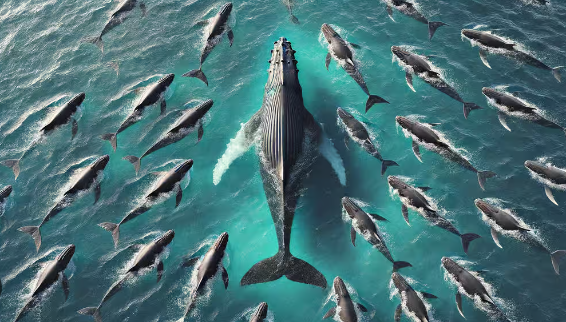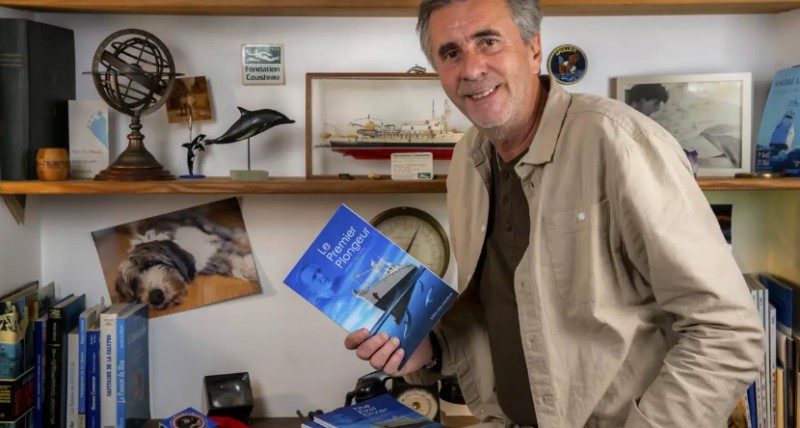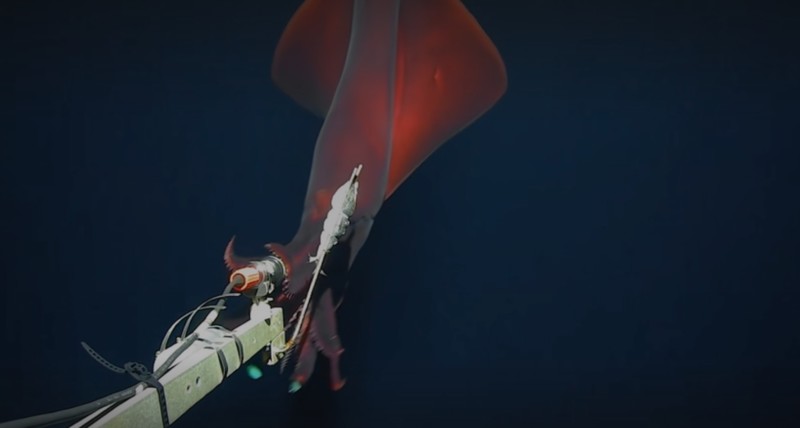A whale escorted by a pod of dolphins? You’re not dreaming; this scene was recently observed in the Bay of Biscay along the French Atlantic coast. A photographer and videographer had the chance to film a group of pilot whales escorting a humpback whale during its seasonal migration north. The sight might seem extraordinary, but this behavior isn’t all that unusual… Let’s explain!
Last month, a magnificent naturalist observation was shared on social media, showing an aerial view of a humpback whale’s majestic swim, escorted by a group of pilot whales. Is this a rare phenomenon? Not so much. Humpback whales are migratory species that reproduce and give birth in warm waters during the winter season, then move up the North Atlantic to reach cooler, but above all, richer waters in terms of food during the summer season. Spring is therefore the ideal season to observe these large baleen whales during their migration! But what about their joyful escort?
In spring, the pilot whales put on a show!
Along the French coast, spring is also the season for another species of cetacean, this time toothed: the long-finned pilot whales, large dolphins that can measure over 5.50 meters and weigh nearly 3 tons. Why? Because in April, squid and other cephalopods reproduce on the continental shelf, near the coast, to the delight of the pilot whales, whose diet mainly consists of cephalopods. They can hunt at depths of 600 meters, thanks in particular to their prominent forehead, which gives them the name « pilot whale » in English. This prominence allows them to echolocate, functioning like an underwater sonar to detect the environment—and prey—in great depths, where complete darkness prevails. But this sense also allows them to communicate with their peers! Living in matriarchal groups of ten to over a hundred individuals, pilot whales are characterized by their great intraspecific sociability, but also interspecific! It is not uncommon, as here with a humpback whale, to observe scenes of play, mutual assistance, or even mating that can lead to hybridization.
Sources of anthropogenic underwater noise pollution likely to impact the survival of cetaceans that use echolocation, like long-finned pilot whales. © NOAA Fisheries
When social cohesion becomes deadly
The strong social cohesion of pilot whales can lead to dramatic events, such as mass strandings: when one individual is in trouble, its peers will try to rescue it, putting themselves in danger as well. However, this is not the only hypothesis behind these strandings. Other factors can come into play, sometimes related to the natural environment, such as the topography of the coastlines, tidal amplitudes, or ocean currents. But unfortunately, more and more are linked to human activities: maritime traffic, the use of military sonars, offshore underwater work, or seismic and particularly oil exploration, are all activities responsible for constant and deafening underwater noise. Indeed, scientists denounce underwater noise pollution as a significant stress factor—measured by high cortisol levels in the fat of mammals—causing disorientation due to the disruption of their echolocation sense, and sometimes even death by gas embolism when decibels are high at depth.
As Rémi Dupouy, a naturalist for Futura and director of the series Instinctif, concludes: « Rather than disturbing or decimating cetaceans, humans would do well to be inspired by their togetherness, collective intelligence, and solidarity.




